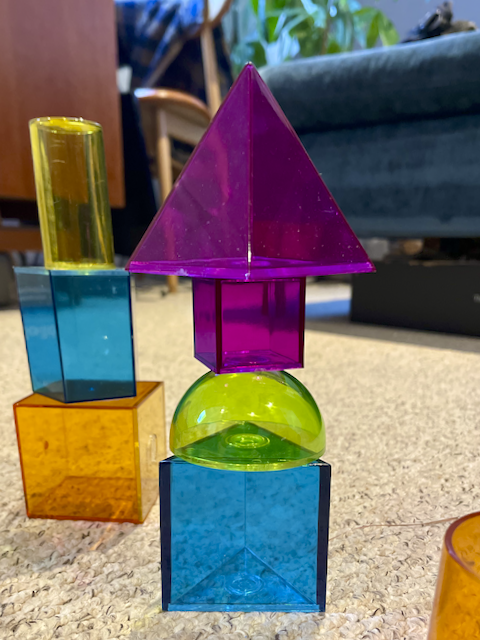Plan for and support student learning through appropriate approaches and environments.
The course I’m teaching on, MA Innovative Fashion Production, aims to prepare the students for changing design and production systems to help lessen the environmental impact of the fashion industry. They are challenged to question the status quo, identify new opportunities by using emerging technologies and sustainable approaches and test their ideas.
This year, when asking for feedback on the student’s first unit assignment, a few students said that they wished for the assignments to be “more realistic”, wishing for working on projects that directly fit within the processes currently used in the industry.
This revealed a discrepancy between what teachers and some students thought the purpose of studying on this course is. Consequently, the aims of education are apparently not clear and with it expectations of taught content and assignment design differs.

What a great opportunity for a classroom conversation, maybe a debate? However, I am unsure about how to approach this strategically and productively.
As the teaching team is very clear about- and happy with the course aims (fig.1) at the moment, I want to excite the students about the opportunities it entails, namely that, as bell hooks (1994,p.12) puts it “The classroom remains the most radical space of possibility in the academy.” Where bell hooks’ classroom space is opposed to demands and expectations of family, community and society, my classroom’s space is opposed to economic compulsion to function within- and serve a capitalist, fast-fashion market.
“The classroom remains the most radical space of possibility in the academy.”
bell hooks, 1994, p.12
In other words, where and when else do we have the time and space to collectively rethink our actions with the aim to improve processes which are, in this case, detrimental to the environment and consequentially to human health?
Another good reason which I can raise awareness of, is the reality of rapid changes in the job market and industry knowledge requirements, as my tutor, Kwame Baah, pointed out to me, when I asked him for his thoughts.
On the other hand, acknowledging that the student wasn’t aware of the content still to be taught which includes indeed much contemporary industry practice, I can inform the class I will emphasise that in preparation to disrupt current practices we are teaching them about the current system in more depth than they have been taught during their BA. I will follow this up with specific examples of unit content to be taught before they finally embark on their self-guided Masters projects.
To incite or nurture excitement amongst the teachers and students (fig.2), I turned to collaborative approaches, one of which is the Academic Enhancement’s Framework for Student Partnerships and Co-creation at UAL.
Where the aims of our course are non-negotiable on short-term, sub-ordinate aims are well negotiable, such as which specific areas within fashion production is examined, case studies, etc., “can be decided together and can be “organic, evolving and changeable.”(UAL: – Academic Enhancement, p.2).
Pursuing this approach, I will share and talk about the framework with the students, as it introduces principles of a teacher-student relationship that my students are unlikely to be familiar with (I wasn’t), such as unknowing and relationality. Despite this hurdle, I think it will be worthwhile, if the result yields an enhanced level of motivation, meaning and excitement towards our work.

References
Academic Enhancement, University of the Arts London (2025) Dr Amita Nijhawan: Framework for Student Partnerships and Co-creation at UAL. Available at: chrome-extension://efaidnbmnnnibpcajpcglclefindmkaj/https://www.arts.ac.uk/__data/assets/pdf_file/0015/453201/Framework-for-Student-Partnerships-and-Co-creation-at-UAL-2.pdf Accessed: 10 March, 2025
Freire, P. (2014). Pedagogy of hope. London: Bloomsbury.
hooks, bell (1994) Teaching to transgress: education as the practice of freedom. New York: Routledge, Taylor & Francis Group. (p. 12) Available at: https://doi.org/10.4324/9780203700280.


